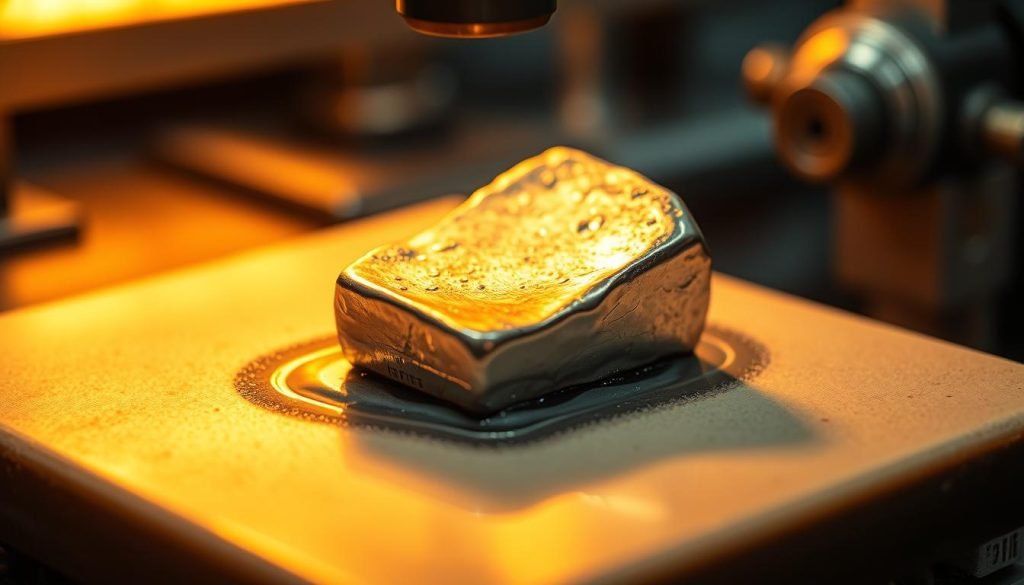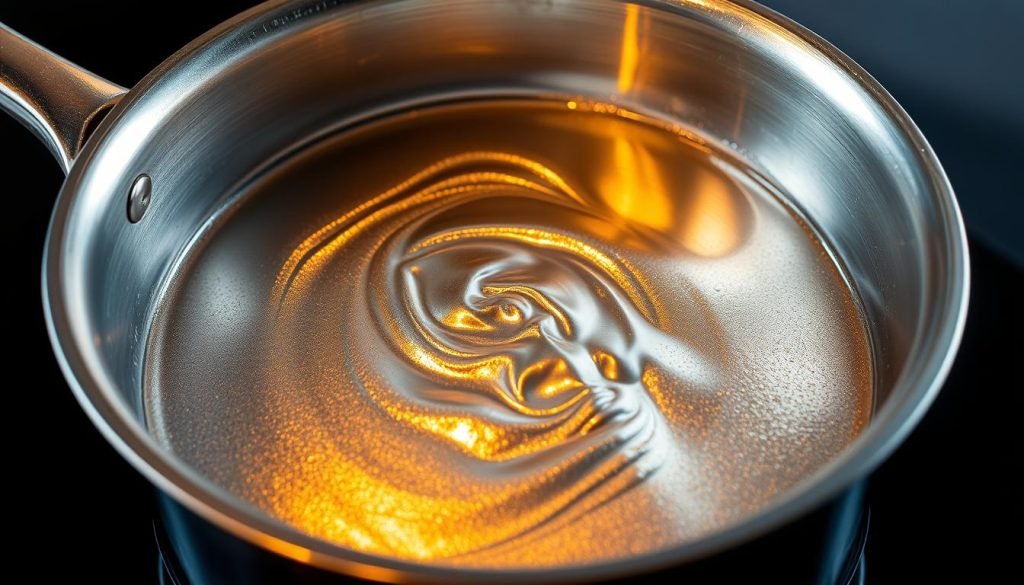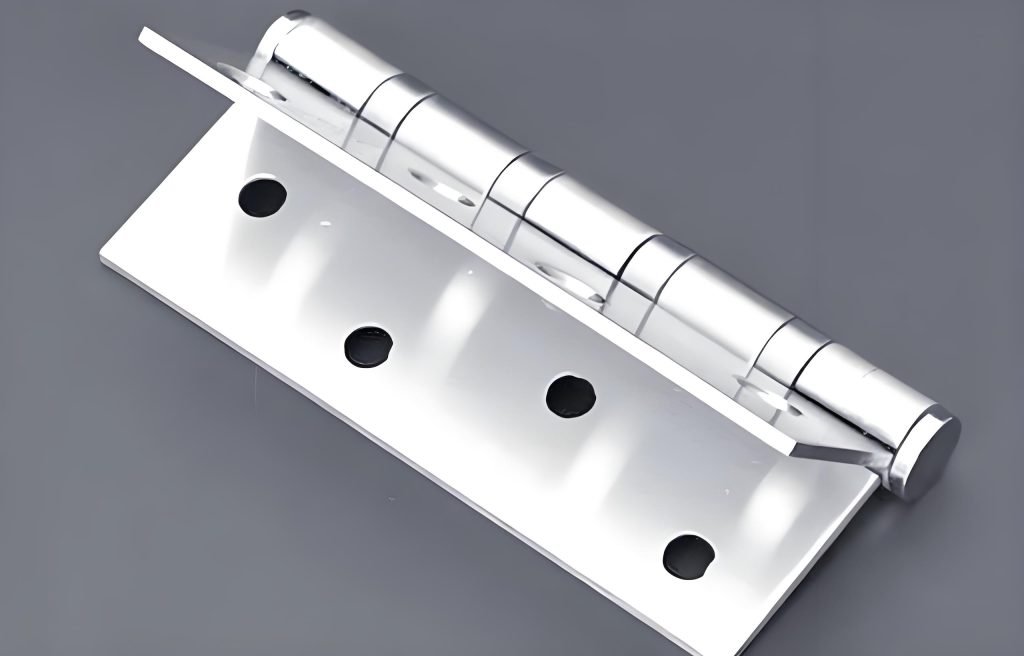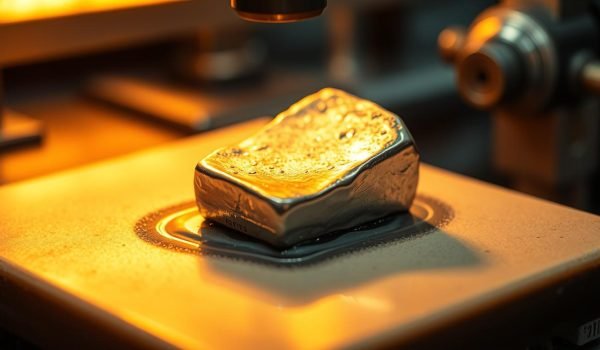Understanding the properties of metals like tin is crucial for various industrial applications. Tin, a silver-colored, malleable metal, has a relatively low melting temperature of 231.93°C (449.47°F).
When heated above this temperature, tin’s crystal structure disrupts, turning it into a liquid. This property makes tin valuable for specific uses, particularly in electronics manufacturing and coating processes.
You’ll discover how tin’s unique properties, including its resistance to corrosion and ability to form useful alloys, make it a vital material in various industries.

Understanding Tin as a Metal
As you explore the world of metals, tin stands out for its unique properties and applications. Tin is a metal that you’re likely familiar with, especially in its common form, beta-tin, which presents as a silvery-white, lustrous metal. To fully appreciate tin, it’s essential to understand its chemical classification and physical characteristics.
Chemical Classification and Position in the Periodic Table
Tin is classified as a post-transition metal in the periodic table, specifically in group 14. It has more non-radioactive isotopes than any other element, which is a unique characteristic. Tin exists in two main allotropes: alpha-tin and beta-tin.
Physical Characteristics of Tin
Tin is known for its malleability and soft texture, making it easy to work with. The metal exhibits moderate thermal conductivity (66.8 W/m·K) and has a density of 7.265 g/cm³ for beta-tin. One of tin’s distinctive features is the “tin cry,” a crackling sound produced when a piece of tin is bent due to the twinning deformation of its crystal structure.
Understanding these physical properties of tin is crucial for selecting the right applications, as they directly influence the metal’s performance in various conditions.
The Tin Melting Point
You need to know the melting point of tin to appreciate its versatility in manufacturing. The melting point is a critical property that determines the suitability of tin for various applications.
Exact Melting Temperature of Tin
Tin melts at a specific temperature, which is a crucial factor in its applications. The exact melting temperature of tin is 231.93°C. This well-defined melting point makes tin a reliable choice for processes that require precise temperature control.
The Science Behind Tin’s Melting Process
When heated above its melting point, the individual atoms in tin gain enough energy to disrupt its crystal structure, becoming a disordered liquid. The melting process involves a phase transition where the orderly crystalline lattice structure breaks down as thermal energy overcomes the interatomic bonds. During melting, tin atoms gain sufficient kinetic energy to overcome the forces holding them in fixed positions, allowing them to move more freely in the liquid state. This process is endothermic, requiring approximately 7.03 kJ/mol of energy to complete the solid-to-liquid phase transition.
Allotropes of Tin and Their Impact on Melting Properties
You might be surprised to learn that tin has multiple forms, or allotropes, that impact its melting point. The two primary allotropes are alpha tin (gray tin) and beta tin (white tin), each with distinct properties.
Alpha Tin (Gray Tin) Properties
Alpha tin, also known as gray tin, is a non-metallic allotrope that exists at temperatures below 13.2°C (55.6°F). It has a diamond-like crystal structure, which is brittle and lacks the luster of metallic tin. When tin is exposed to cold temperatures for extended periods, it can transform into alpha tin, a phenomenon known as “tin pest.” This transformation can significantly affect the structural integrity of tin components.
Beta Tin (White Tin) Properties
Beta tin, or white tin, is the common metallic form of tin that exists at room temperature and above. It features a tetragonal crystal structure, giving it characteristic metallic properties such as a lustrous, silvery-white appearance and good electrical conductivity. Beta tin is stable at normal and elevated temperatures, making it suitable for various industrial applications, including soldering, plating, and alloying. Its mechanical properties include good malleability and ductility, allowing it to be rolled into foil or drawn into wire.
Factors Affecting Tin’s Melting Point
Tin’s melting properties are affected by multiple elements, including its purity and the conditions it’s exposed to. Understanding these factors is crucial for optimizing tin’s performance in various applications.

Purity Levels and Their Influence
The purity of tin significantly impacts its melting point. Impurities can lower the melting point or cause it to become less consistent. Ensuring high purity levels is essential for maintaining the desired properties of tin.
Alloying Elements and Their Effects
Alloying elements such as antimony or copper can be added to tin to enhance its properties. These elements can harden tin and make it more resistant to tin pest. The formation of alloys like bronze (tin and copper) also demonstrates how alloying can alter tin’s characteristics.
Environmental Conditions During Melting
Environmental conditions during the melting process, such as oxidation, humidity, and pressure, can significantly impact tin’s behavior. Using protective atmospheres like argon or nitrogen can prevent oxidation. Moreover, controlling humidity and pressure conditions is vital for producing high-quality tin components.
Comparing Tin’s Melting Point with Other Metals
Understanding how tin’s melting point compares to other metals is essential for selecting the right material for specific applications. Tin has a melting point of 231.93°C, which is relatively low compared to many other metals.
Tin vs. Other Common Industrial Metals
Tin is often compared to other common industrial metals like zinc and aluminum. While zinc has a higher melting point at 419.5°C and aluminum melts at 660°C, tin’s relatively low melting point makes it ideal for applications requiring moderate temperature processing, such as electronics manufacturing.
Position Among Low-Melting-Point Metals
Among metals with low melting points, tin occupies a middle position. It has a higher melting point than gallium (29.8°C) and indium (156.6°C) but is lower than some other low-melting-point metals like bismuth (271.5°C). This positioning makes tin valuable for applications that require a balance between processability and in-service performance.
Limitations of Tin Due to Its Low Melting Point
Tin’s low melting point, while beneficial in certain applications, also presents several limitations. You need to be aware of these limitations when considering tin for various uses.
Structural Integrity Concerns
The low melting point of tin can compromise its structural integrity, particularly in high-temperature environments. When tin is exposed to temperatures near its melting point, it can become soft and lose its mechanical strength. This can be a significant concern in applications where tin is used as a structural material or as a solder in electronic components.
The “Tin Pest” Phenomenon
The “tin pest” phenomenon is another limitation of tin due to its low melting point. At temperatures below 13.2°C, tin undergoes an allotropic transformation from beta tin (metallic form) to alpha tin (non-metallic, powdery form). This transformation can cause a volume expansion of approximately 27%, leading to structural disintegration. You can prevent this transformation by adding small amounts of other elements like antimony or bismuth to the tin.
Industrial and Commercial Applications of Tin
You can find tin being utilized in a wide range of applications, from soldering to alloy manufacturing, thanks to its favorable melting characteristics. Tin’s low melting point and alloying capabilities make it a valuable material in various industrial processes.
Soldering Applications
Tin is widely used in soldering applications due to its low melting point, which allows for efficient and reliable joining of electronic components. Tin-based solders are crucial in the electronics industry for assembling printed circuit boards and other electronic devices. The use of tin in soldering ensures strong, durable connections.
Coating and Plating Uses
Tin is used for coating and plating other metals to enhance their corrosion resistance and solderability. Tin plating is common in the production of tin cans and other packaging materials. Additionally, tin coating is used to protect steel and other metals from corrosion, extending their lifespan.

Tin Alloys in Manufacturing
Tin is alloyed with other metals to create materials with specific properties for various applications. For instance, pewter, which is mainly tin mixed with copper and other metals, is used for decorative items and tableware. Babbitt metal, another tin alloy, is used in bearings due to its low friction and conformability. Bronze alloys, containing copper and tin, are valued for their strength, corrosion resistance, and low friction, making them suitable for marine hardware and sculptures.
Understanding tin’s role in these applications helps engineers select the right materials for manufacturing processes and end-use requirements, balancing factors like melting temperature, mechanical properties, and corrosion resistance.
Conclusion: The Significance of Tin’s Melting Properties
Understanding tin’s melting properties is vital for engineers and manufacturers working with this versatile metal. Tin’s melting point of 231.93°C has shaped its applications throughout history, from ancient bronze alloys to modern electronics manufacturing. The relatively low melting point creates both opportunities and challenges, allowing for energy-efficient processing while limiting high-temperature applications. Tin’s melting properties have made it indispensable in the electronics industry, particularly in soldering. As industry evolves, tin’s melting characteristics will remain significant, with ongoing research focused on optimizing tin alloys for specific thermal requirements.




